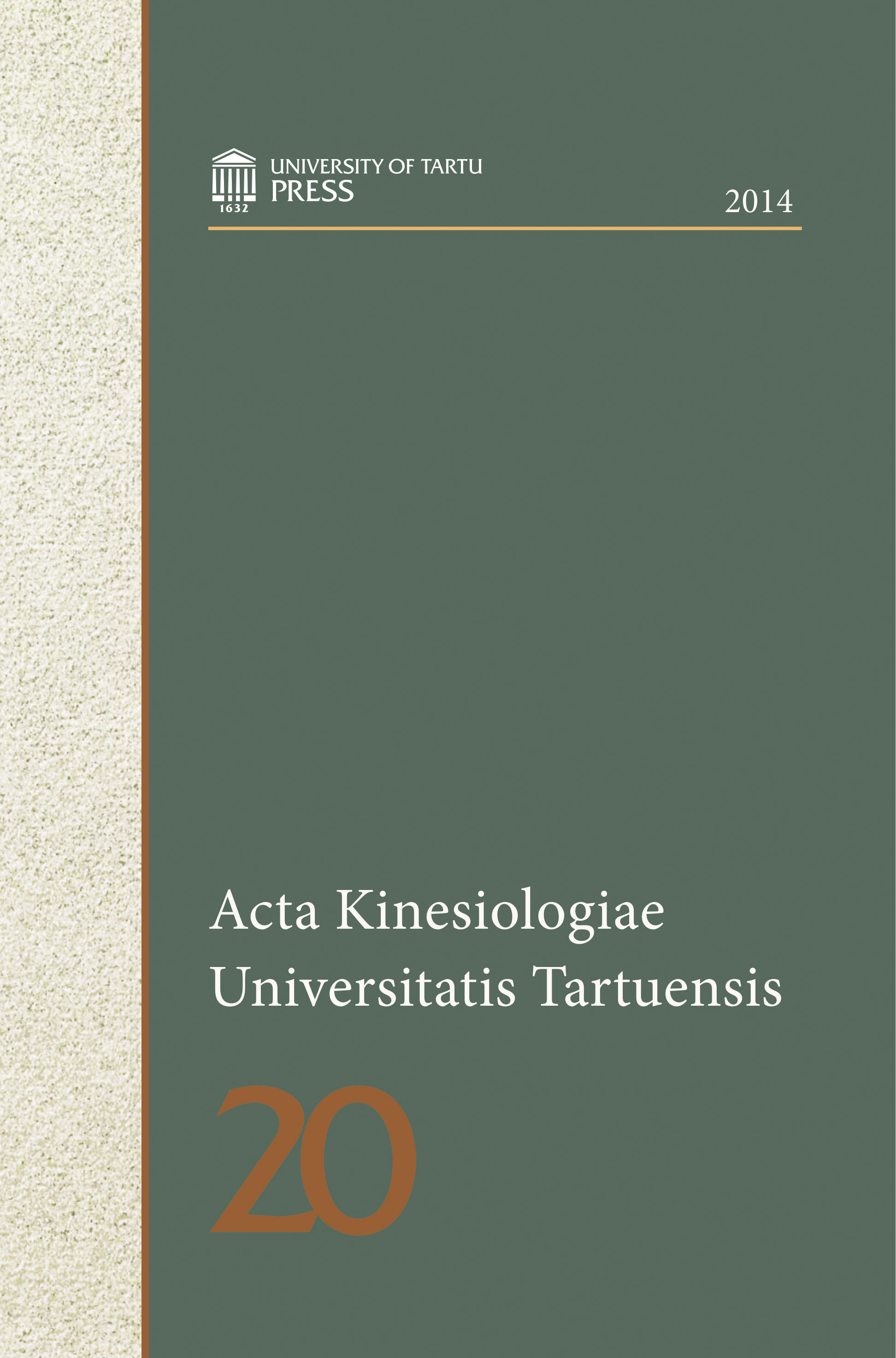A new method for the measurement of maximal fat oxidation: a pilot study
DOI:
https://doi.org/10.12697/akut.2014.20.08Keywords:
soccer, fat oxidation, aerobic capacity, FatmaxAbstract
Exercise intensity is one of the main factors determining the rate of fat oxidation during exercise. The 3-min incremental protocol is desirable for practical reasons and allows for the estimation of fat oxidation across a wide range of exercise intensities. However, the use of a small number of exercise intensities traditionally used to estimate fat oxidation does not allow for the precise estimation of exercise intensity at which the rate of fat oxidation is maximal (Fatmax). The purpose of this study was to examine the validity of the determination of Fatmax adopting 1-min step incremental bicycle ergometer protocol. In this study we also compared Fatmax determined by 3-min step incremental bicycle ergometer test with Fatmax measured by 1-min step icremental bicycle ergometer test. The average peak oxygen consumption (VO2peak) for the entire group of subjects was 48.85±7.58 ml/min/kg. The Fatmax occurred at 47.2±4.9% of VO2peak in Test 1 and at 51.3±7.4% of VO2peak in Test 2, which corresponded to 35.8±7.4% and 36.1±8.0% of the maximal workload (Wmax) in Tests 1 and 2, respectively. Heart rate (HR) in Fatmax was at 63.9±6.8% and 62.1±6.2% from maximal HR in Tests 1 and 2, respectively. There were no significant differences (p<0.05) between work rate (WR), respiratory coefficent (RER) and HR at Fatmax during both tests. Similary, the values of Fatmax and VOfatmax were not significantly different in both tests. It appeared that the proposed 1-min step incemental exercise protocol can be used for the measurement of Fatmax in physically active males as the obtained results were not different from previously used methods to calculate Fatmax. However, the Fatmax results are different as fat oxidation rate is affected by endurance, sex, age, body composition, exercise type and exercise duration.


